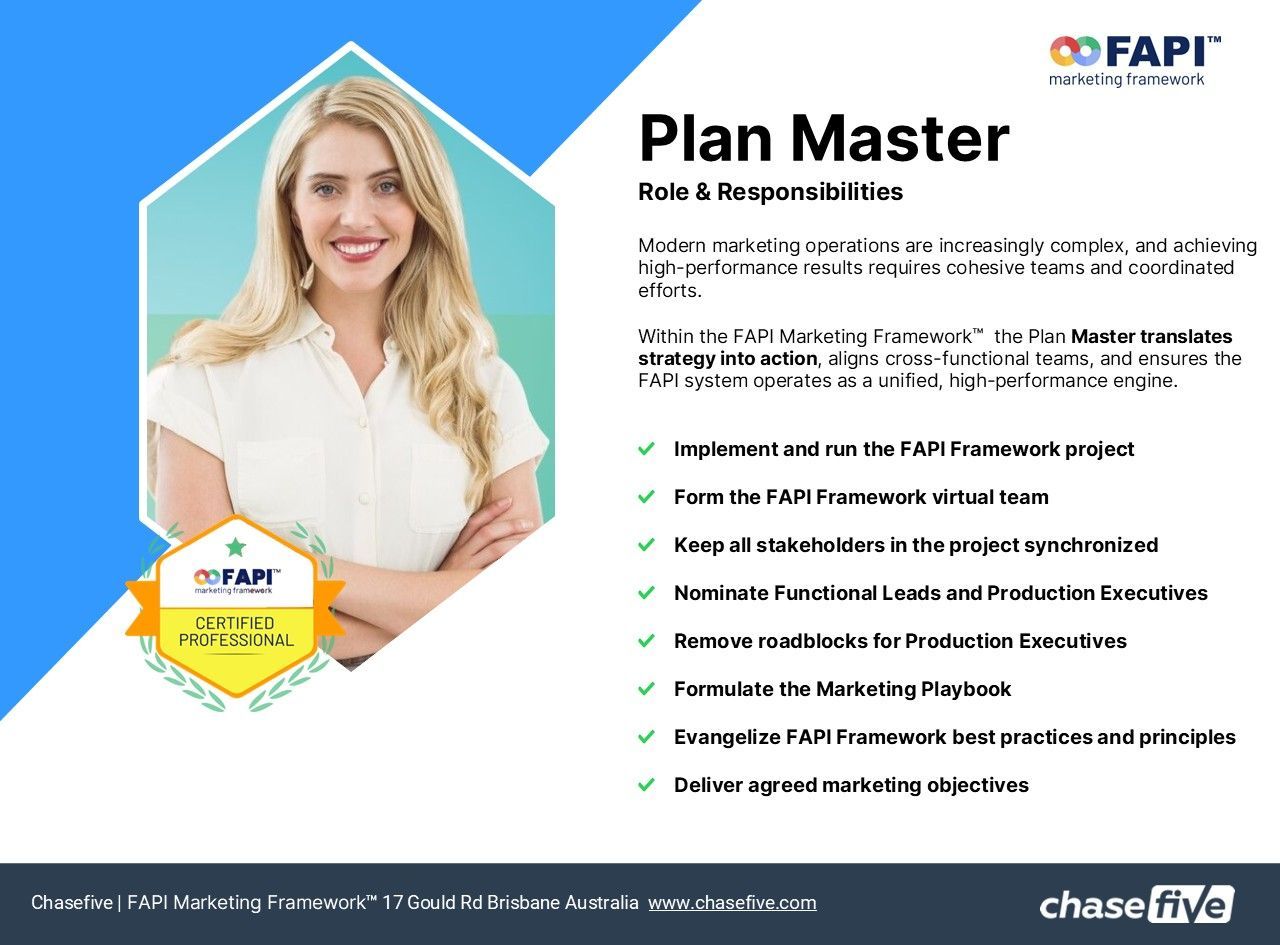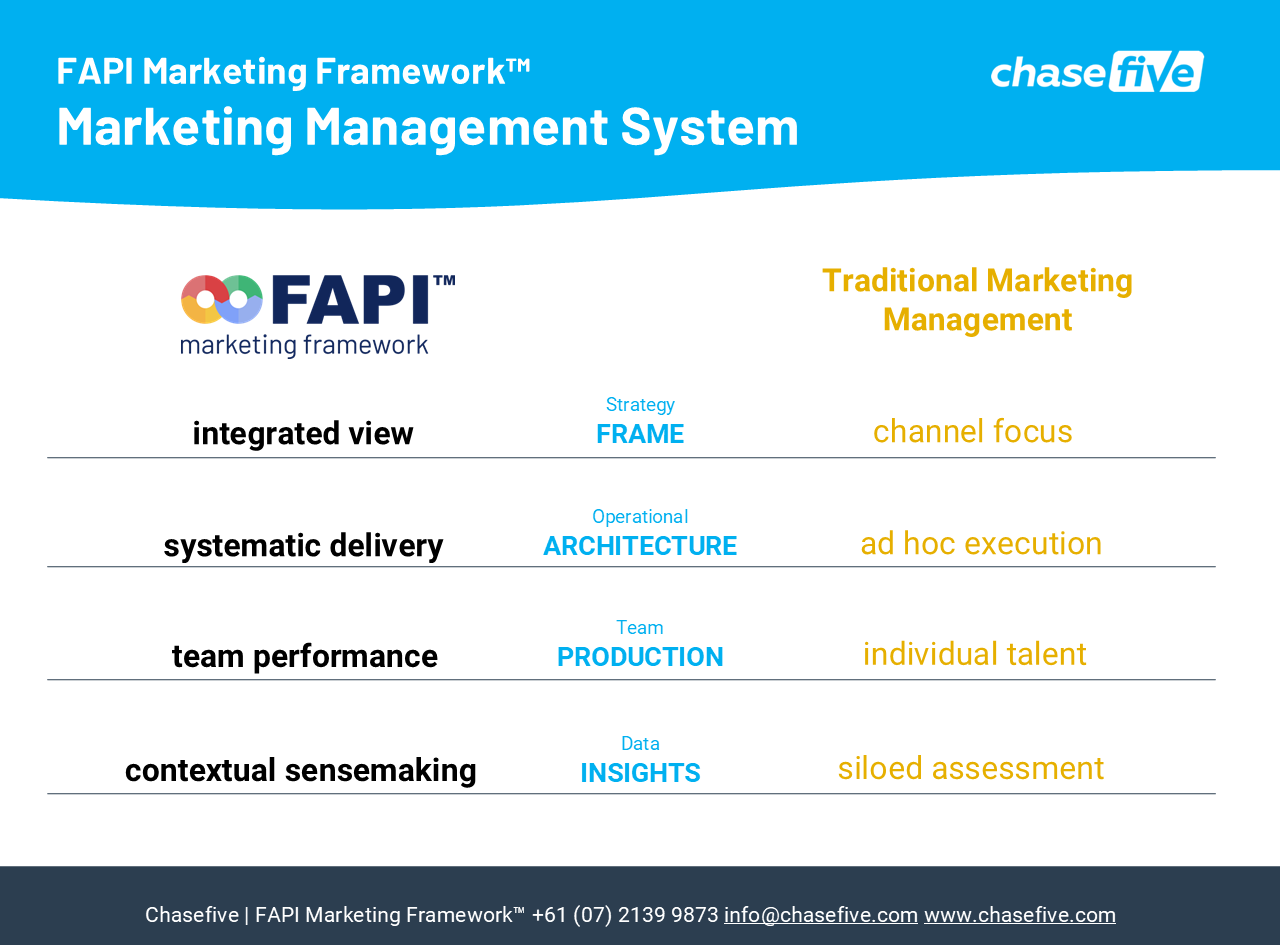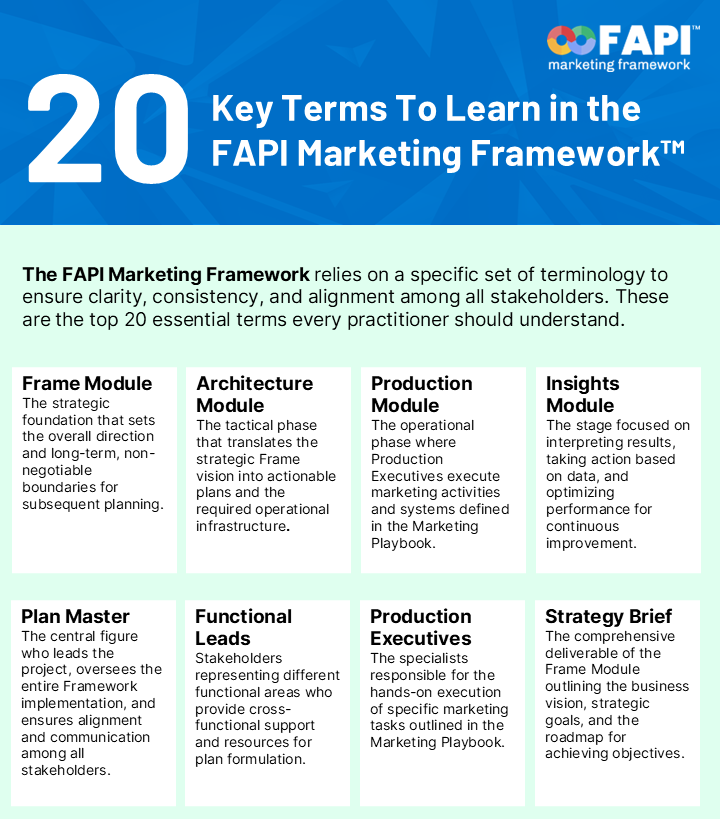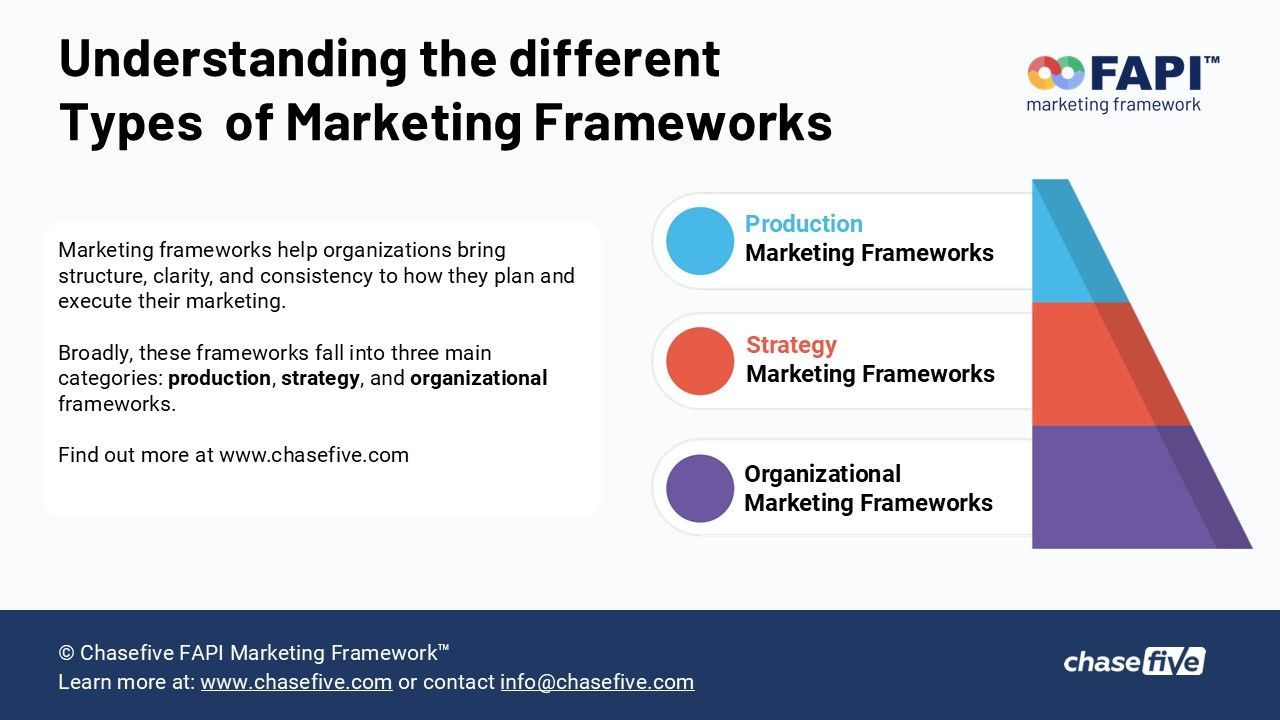Clarifying marketing management vs. production and the different roles in the FAPI Marketing Framework™
According to leading job sites, there are over twenty distinct marketing role categories, including content creation, market research analysis, product marketing, public relations and more confirming how marketing is an extremely diverse and complex field.
To rationalize the allocation of responsibility within the marketing team, it is essential to clarify the distinction between two crucial areas - marketing management and marketing production functions. This distinction can sometimes become blurred, underscoring the importance of a clear understanding of the differences between the two.
The FAPI Marketing Framework™ outlines specific roles and responsibilities for its project members, including the Plan Master, Functional Leads, Production Executives, and the Leadership Team. Here's a summary of each role within the Framework™:

Plan Master
Role: Serves as the senior marketing stakeholder, leading the project and being accountable for all deliverables.
Responsibilities:
- Implementing the FAPI Marketing Framework™ and running the project.
- Forming the virtual team for the FAPI Framework™.
- Keeping all stakeholders in the project synchronized.
- Hosting FAPI Marketing Framework™ team meetings.
- Nominating Functional Leads and assisting them as needed.
- Removing roadblocks for Production Executives.
- Evangelizing FAPI Marketing Framework™ planning and management best practices and principles within the business.
- Delivering agreed-upon marketing objectives.
Functional Leads
Role: Provide cross-functional support to the project, nominated by the Plan Master.
Responsibilities:
- Supporting the Plan Master in organizing the structure and mechanics of specific modules (e.g., customer loyalty programs).
- Providing the availability of resources from their respective departments as needed.
- Regularly deal with legal counsel, customer service managers, or other department heads who can provide necessary resources or support to ensure successful plan formulation and execution.
Production Executives
Role: Marketing execution specialists engaged in the execution of specific tasks agreed upon to roll out the marketing plan.
Responsibilities:
- Executing specific tasks or functions critical to the marketing plan's success.
- Can include members from the marketing department, external agencies, or different departments within the business.
- Ensuring uninterrupted flow of marketing execution by fulfilling their assigned tasks.
Leadership Team
Role: Comprises C-suite or senior management team responsible for the commercial performance of the business and P&L results.
Responsibilities:
- Liaising with the Plan Master to receive updates on the project's progress, performance, and the return on marketing investment (ROMI).
Each role within the FAPI Marketing Framework™ plays a crucial part in the success of marketing planning and execution. The Framework™ emphasizes the need for significant leadership skills, cross-functional collaboration, and a shared process of subdividing responsibilities within the team to ensure effective and efficient marketing outcomes.
Join the FAPI Marketing Framework™ Academy to learn more about marketing team resource planning and team building.







